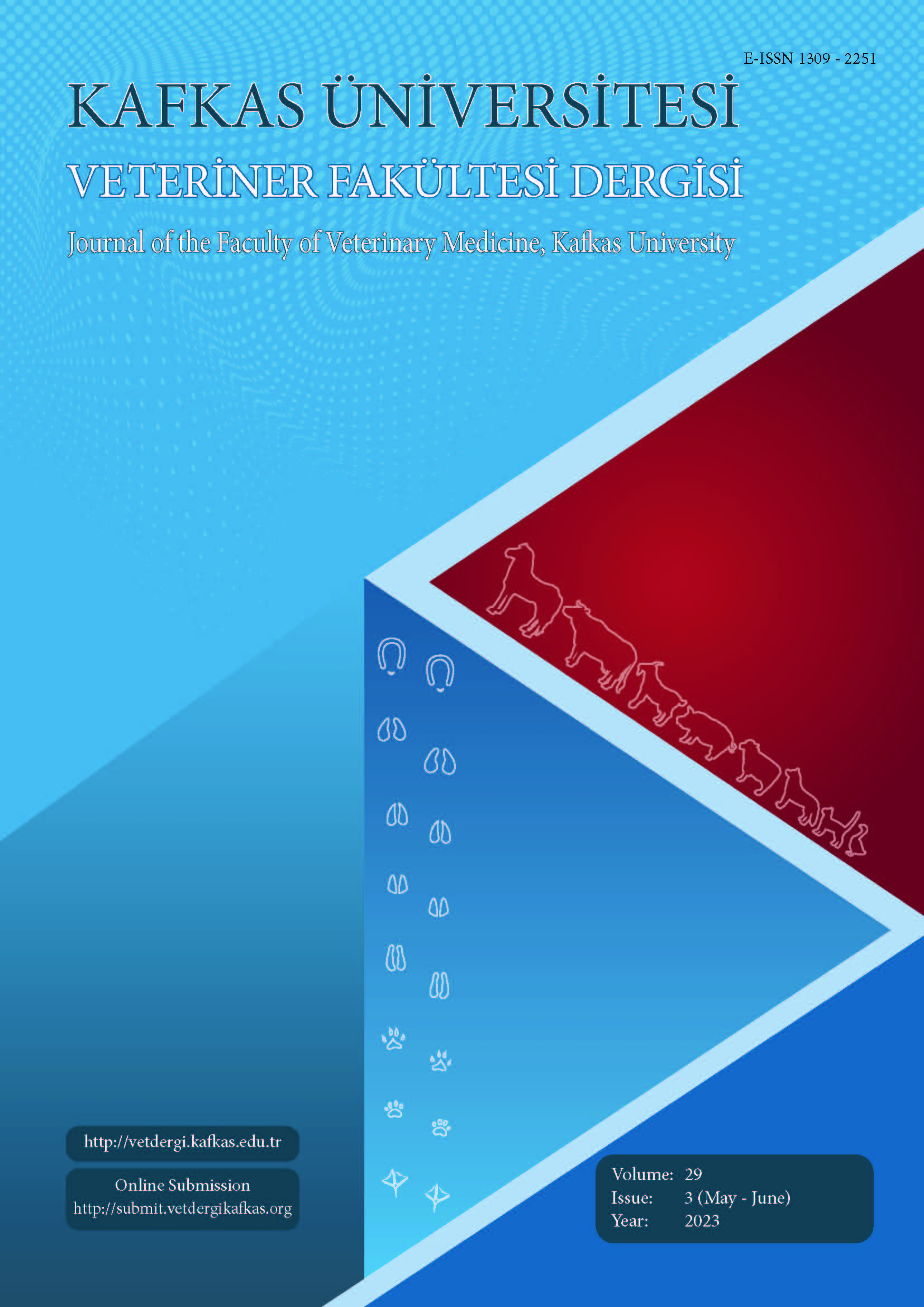
This journal is licensed under a Creative Commons Attribution-NonCommercial 4.0 International License
Kafkas Üniversitesi Veteriner Fakültesi Dergisi
2023 , Vol 29 , Issue 3
Evaluation of the Immunopathological Response to BCG Vaccine in a Xenogeneic Immunocompetent Animal
1Department of Animal Medicine (Infectious Diseases), Faculty of Veterinary Medicine, Benha University, Moshtohor, Tukh, Qalyobiya, 13736 EGYPT2Department of Pathology, Faculty of Veterinary Medicine, Benha University, Moshtohor, Tukh, Qalyobiya, 13736 EGYPT
3Department of Statistics, Faculty of Commerce, Benha University, Benha, Qalyobiya, EGYPT
4Department of Medical Laboratory Sciences, Faculty of Applied Medical Sciences, King Abdulaziz University, Jeddah, SAUDI ARABIA
5Special Infectious Agents Unit, King Fahd Medical Research Center, King Abdulaziz University, Jeddah, SAUDI ARABIA DOI : 10.9775/kvfd.2023.29187 Mycobacterium bovis, the causative agent of bovine tuberculosis (BTB), is one of the most significant endemic diseases confronting government, veterinary professionals, and farming industry worldwide nowadays. M. bovis has not only a negative impact on bovine health and economy, but also poses a threat to public health as a zoonotic disease that could be transmitted from animal to human. Although, bacillus Calmette-Guérin (BCG) vaccine of M. bovis has been extensively used in many animals, only few studies had reported its side effects in these animals. In this study, the systemic pathological lesions and immunoglobulin levels associated with intranasal (IN) and subcutaneous (SC) injection of BCG vaccine in Swiss male mice have been evaluated. The results revealed an elevation in IgM and IgA levels in both routes (nebulization, subcutaneous injection) while there was a dramatic increase in IgG levels in subcutaneously injected mice. Aerosolization of BCG vaccine using a nebulizer resulted in severe pulmonary lesions with numerous megakaryocytes in the spleens of mice. On the other hand, SC injection had mild effect on pulmonary tissues and induced moderate extramedullary hematopoiesis in the hepatic tissues of mice. In conclusion, inadvertent vaccination of BCG in Swiss mice, triggered adverse tissue reaction and remarkable increase in Ig level. The severity of tissue lesions corresponded to the injection route in mice. Keywords : Aerosol, BCG, Extramedullary hematopoiesis, Mice, Vaccine










